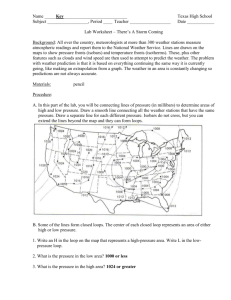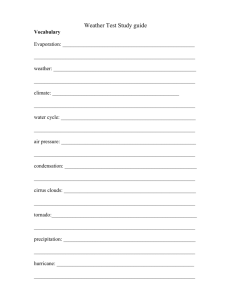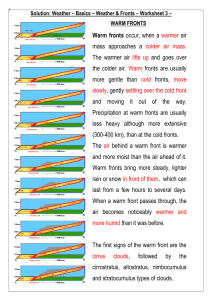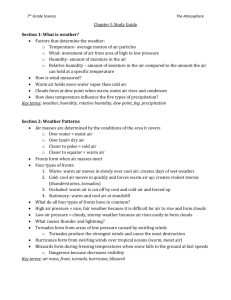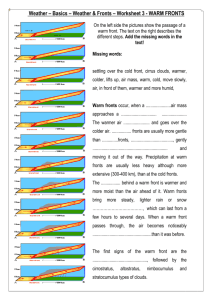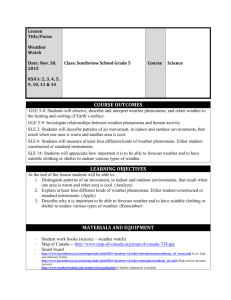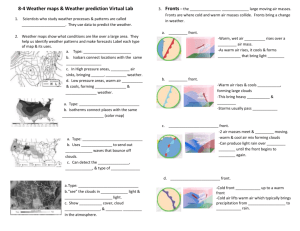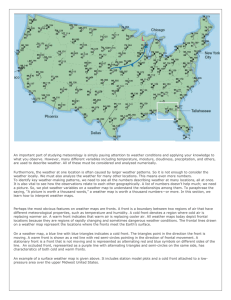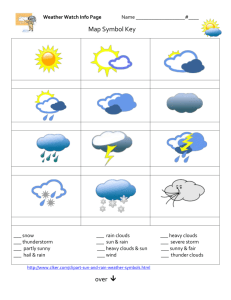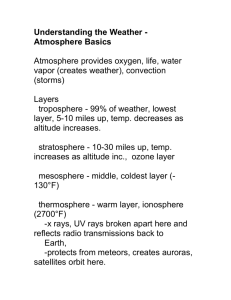29. Weather Map Worksheet #2
advertisement
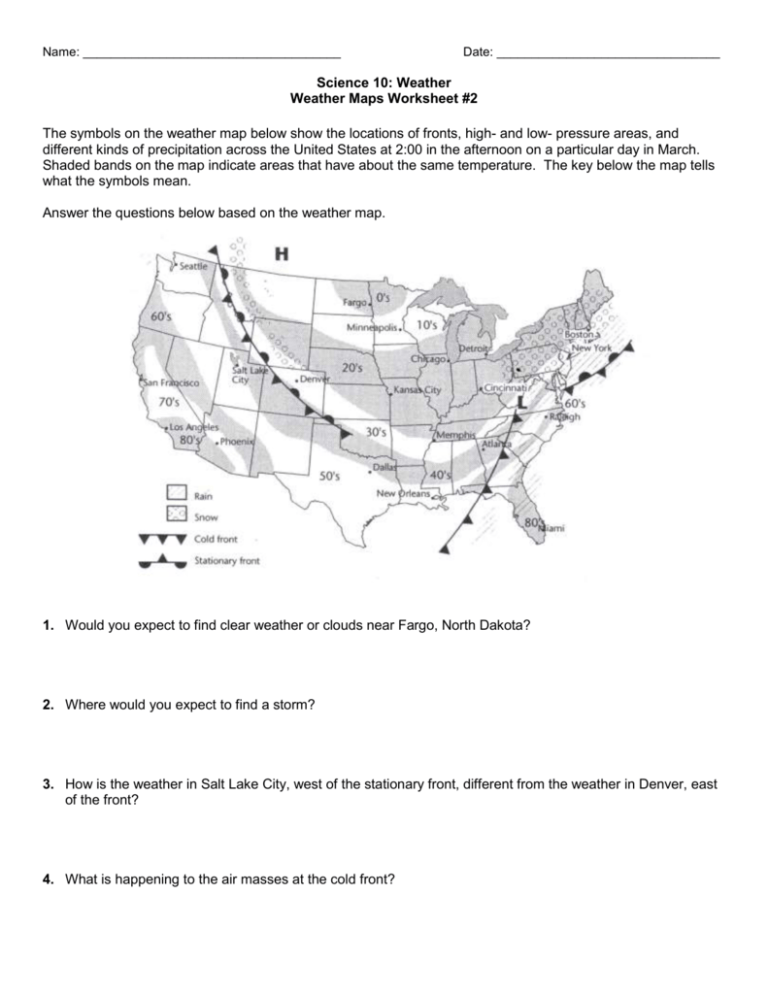
Name: _____________________________________ Date: ________________________________ Science 10: Weather Weather Maps Worksheet #2 The symbols on the weather map below show the locations of fronts, high- and low- pressure areas, and different kinds of precipitation across the United States at 2:00 in the afternoon on a particular day in March. Shaded bands on the map indicate areas that have about the same temperature. The key below the map tells what the symbols mean. Answer the questions below based on the weather map. 1. Would you expect to find clear weather or clouds near Fargo, North Dakota? 2. Where would you expect to find a storm? 3. How is the weather in Salt Lake City, west of the stationary front, different from the weather in Denver, east of the front? 4. What is happening to the air masses at the cold front? Name: _____________________________________ Date: ________________________________ Science 10: Weather Weather Maps Worksheet #2 Answers The symbols on the weather map below show the locations of fronts, high- and low- pressure areas, and different kinds of precipitation across the United States at 2:00 in the afternoon on a particular day in March. Shaded bands on the map indicate areas that have about the same temperature. The key below the map tells what the symbols mean. Answer the questions below based on the weather map. 1. Would you expect to find clear weather or clouds near Fargo, North Dakota? Clear skies, because of high pressure system (air sinks) 2. Where would you expect to find a storm? Near the low pressure system, near the cold front (Atlanta or Raleigh) 3. How is the weather in Salt Lake City, west of the stationary front, different from the weather in Denver, east of the front? Salt Lake City is warm, Denver is cold (look at direction of movement of warm and cold fronts) 4. What is happening to the air masses at the cold front? Cold air is sliding under the warm air Warm air is being pushed up and will cool forming condensation/ clouds
